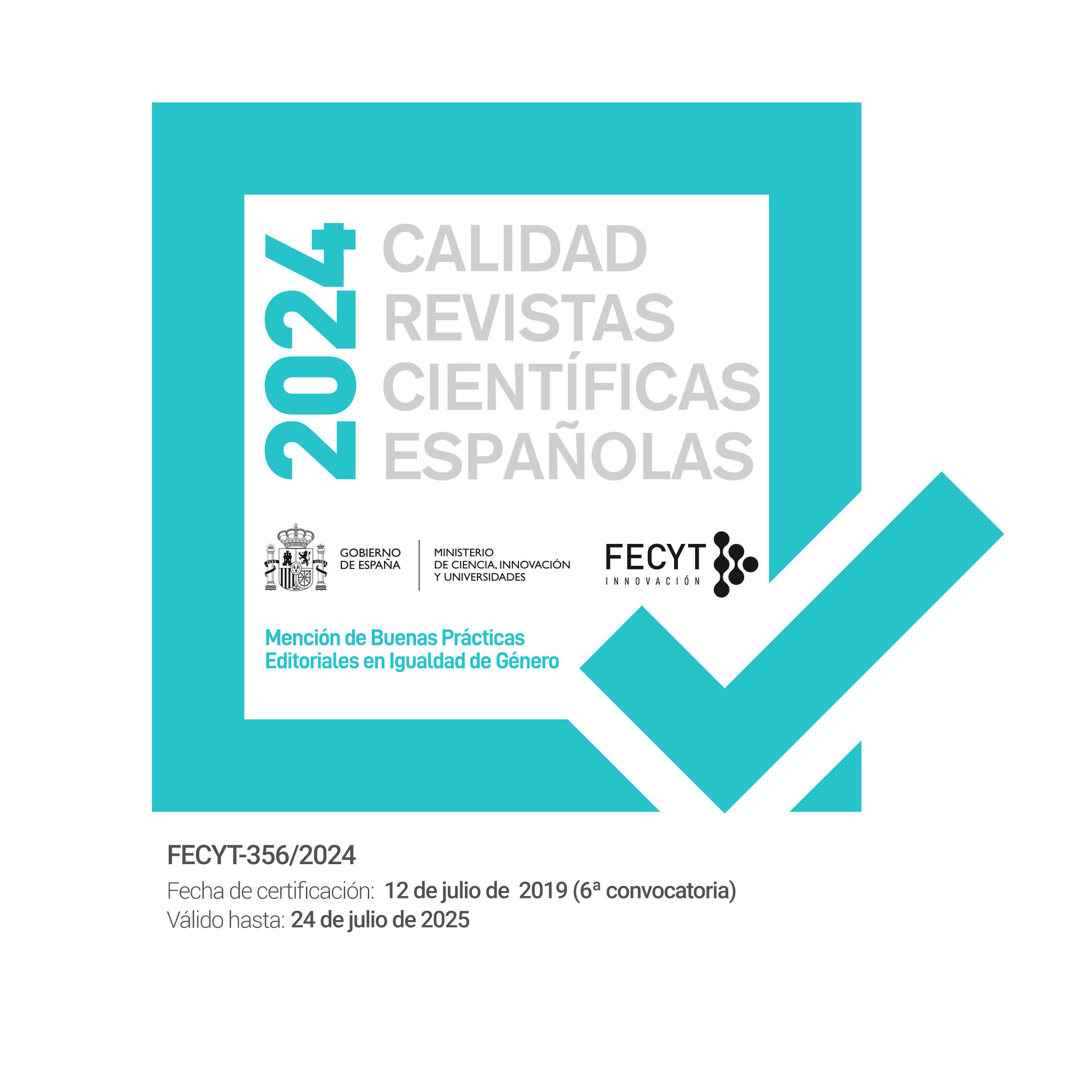Buscando el riesgo aceptable: sobre los métodos de análisis de riesgos empleados en la elaboración de políticas públicas
DOI:
https://doi.org/10.24965/gapp.vi33-34.390Palabras clave:
Riesgo, análisis de riesgo, marketing público, riesgo aceptable, percepción del riesgo, comunicaciónResumen
En la abundante literatura especializada sobre análisis de riesgos se encuentran cientos de obras, de carácter teórico, sobre el cálculo de probabilidades, el manejo de la incertidumbre con respecto a los datos de que se dispone, la incorporación de ésta a los procedimientos de toma de decisiones… Pero muy pocos autores se ocupan de las razones fundamentales que determinan, dan origen, o confieren valor, a los distintos métodos para el análisis de riesgos las bases que han de fundamentar la opción adoptada a favor de uno u otro de esos métodos, las ideasrectoras que han de guiar el proceso de análisis, de medición y clasificación de los distintos riesgos, siguiendo principios que se han expuesto con profusión en la literatura sobre el asunto, pero en los que sólo en contadas ocasiones se detiene el analista de riesgos a pensar.
Descargas
Citas
Adams, J. (1985), Risk and freedom: the record of road safety regulation. Londres: Transport Publishing Projects.
Adams, J. (1988), «Evaluating the effectiveness of road safety measures», Traffic Engineering and Control.
Adams, J. (1995), Risk. Oxon: Routledge.
Aguilar, S. (2003), «Principio de precaución, políticas publicas y riesgo», Política y Sociedad 3.
Alberini, A. et al. (2002), «Does the Value of a Statistical Life Vary with Age and Health Status? Evidence from the United States and Canada», Discussion Paper 02-19, Resources for the Future, Washington, D.C.
Arias Maldonado, M. (2003), «Democracia y sociedad del riesgo. Deliberación, complejidad, incertidumbre», Revista de Estudios Políticos 122.
Beck. U. (1998), «Politics of Risk Society», en J. Franklin ed., The Politics of Risk Society. Cambridge: Polity Press. 9-22.
Beck. U. (2001), La société du risque. Sur la voie d’une autre modernité. Paris: Aubier.
Bernstein, P. L. (1998), Against the Gods. The Remarkable History of Risk. Nueva York: Wiley & Sons. Boyne, R (2003), Risk. Philadelphia: Open University Press.
Capra, F. (1983), The turning point: Science, Society, and the Rising Culture. Nueva York: Bantam Books. Ciceron, M. T. (54 B.C.), De Re Publica. (Diversas ediciones).
Cullen, A. C. y Small, M. J. (2004), «Uncertain Risk: The Role and Limits of Quantitative Assesment», en T. McDaniels y M. mall eds., Risk Analysis and Society. An interdisciplinary characterization of the Field. Cambridge: Cambridge University Press.
Cumming, R. B. (1982). «Risk and the Social Sciences», Risk Analysis 2 (2).
Denise-Lempereur, J.(2000), «Opinion publique et sécurité environnementale», La Revue international et stratégique 39.
Derby, S. L. y Keeney, R. L. (1981), «Risk Analysis: Understanding «How Safe is Safe Enough?» Risk Analysis 3.
Douglas, M. y Wildavsky, A. (1982), Risk and Culture. Berkeley: University of California Press.
Fischhoff, B. et al. (1981), Aceptable Risk. Cambridge: Cambridge University Press.
Fischhoff, B.; Slovic, P. y Lichtenstein, S. (1982), «Lay Foibles and Expert Fables in Judgements about Risk», The American Statistician 3.
Fischhoff, B. (1994), «Acceptable Risk: A Conceptual Proposal», Risk: Health, Safety & Environment 5.
Giddens, A. (1998), «Risk Society: the Context of British Politics», en J. Franklin ed., The Politics of Risk Society. Cambridge: Polity Press.
Godard, O. (2002), «L’émergence du principe de précaution», en O. Godard et al. Traité des nouveaux risques - Précaution, Crise, Assurance. París: Gallimard.
Graham, J. D. Y Baert Wiener, J. (eds.) (1997), Risk vs. Risk. Tradeoffs in protecting health and the environment. Cambridge: Harvard University Press.
Hammitt, J. K. y Jin-Tan Liu (2004), «Effects of Disease Type and Latency on the Value of Mortality Risk,» Journal of Risk and Uncertainty 28 (1): 73-95.
Horlick-Jones, T. y De Marchi, B. (1995), «The crisis of scientific expertise in fin de siécle Europe», Science and Public Poli- cy 22.
Horlick-Jones, T. (2004), «Experts in risk? Do they exist? Health, Risk & Society 2.
HSE (1996), Use of Risks Assessment Within Governmental Departments. Londres: Health and Safety Executive.
Huber, P. (1991), Galileo’s Revenge: Junk Science in the Courtroom. Nueva York: Basic Books.
Kates, R. W. y Kasperson, J. X. (1983), «Comparative Risk Analysis of Technological Hazards (A Review)», Proc. Natl. Acad.Sci. USA 80.
Kelman, S. (1981), «Cost-Benefit Analysis: An Ethical Critique», Regulation 1.
Krupnick, A. et al. (2002), «Age, Healv and the Willingness to Pay for Mortality Risk Reductions: A Contingent Valuation Survey of Ontario Residents», Journal of Risk and Uncertainty 24.
Lagadec, P. (1981), La civilisation du risque. Catastrophes technologiques et responsabilité sociale. Paris: Seuil.
Lindblom, C. E. (1965), The intelligence of democracy: Decision making through mutual adjustment. New York: Free Press.
Oakeshott, M. (1991), Rationalism in Politics. Indianápolis: Liberty Fund.
Otway, H. J., y Thomas, K. (1982), «Reflections on Risk Perception and Policy», Risk Analysis, 2 (2): 69-82.
Pareto, W. (1966), Manuel d’économie politique. Ginebra: Droz.
Perrow, C. (1999), Normal Accidents. Living with High-Risk Technologies. Princeton: Princeton University Press.
Pidgeon, N. et al. (1992), «Risk Perception», en The Royal Society comps., Risk: Analysis, Perception and Management. Report of a Royal Society Study Group. Londres: The Royal Society.
Puy, A. (1995), «Aceptabilidad social de los riesgos», Estudios de psicología 15.
Ruckelshaus, W. D. (1985), «Risk, Science, and Democracy», Issues in Science and Technology, 3.
Slovic, P. (2006), «Informing and Educating the Public about Risk», en P. Slovic, ed., The Perception of Risk. Londres: Earthscan.
Slovic, P., Fischhoff, B. y Lichtenstein, S. (1979), «Rating the Risk», Environment 3.
Sunstein, C. R. (2002), Risk and Reason. Safety, Law and the Environment. Cambridge: Cambridge University Press.
Thaler, R. y Rosen, S. (1976), «The value of saving life: Evidence from the labor market», en N. Terleckyj ed., Household production and consumption. Nueva York: Columbia University Press.
Tindale, S. (1998), «Procastination and the Global Gamble», en J. Franklin ed., The Politics of Risk Society. Cambridge: Polity Press.
Tsuge, T. (2005), «A Choice Experiment Approach to the Valuation of Mortality», The Journal of Risk and Uncertainty 31:1.
Vanaclocha, F. J., Martinón, R. y Losada, R. (2005), «Traumatic renewal of values and value criteria in crisis management», Documentos de Trabajo Política y Gestión 4. Madrid: Universidad Carlos III de Madrid.
Viscusi, W. K. y Joseph E. A. (2003), «The Value of A Statistical Life: A Critical Review of Market Estimates Throughout the World», Journal of Risk and Uncertainty 27: 5-76.
Woollacott, M. (1998), «Risky Business, Safety», en J. Franklin ed., The Politics of Risk Society. Cambridge: Polity Press.
Zinn, J. (2005), «The biographical approach. A better way to understand behaviour regarding health and illness?», Health, Risk and Society 7.












